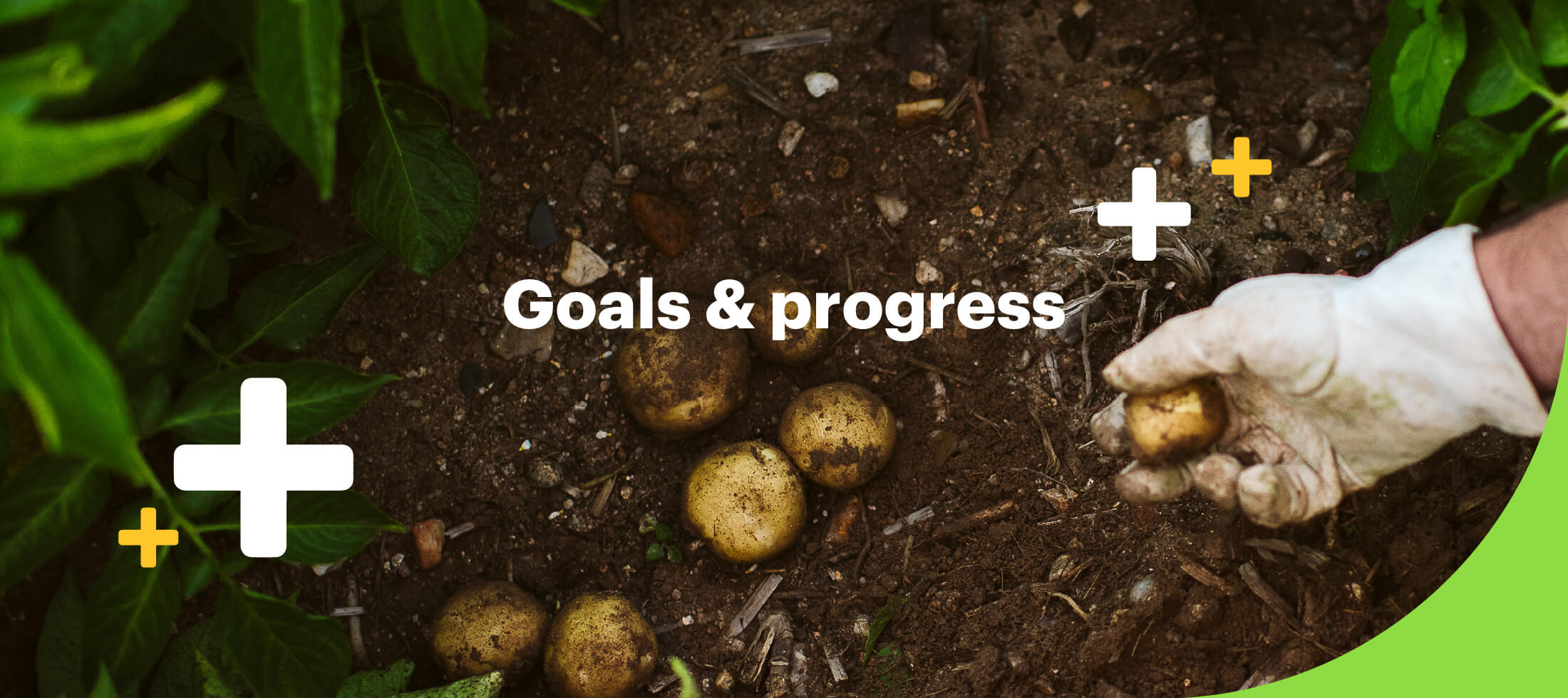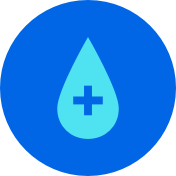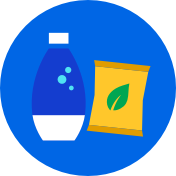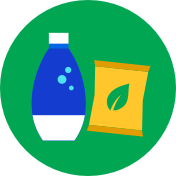
Positive Agriculture
- New goal introduced
- Expanded scope and/or timeline
- 3rd-party limited assurance
Target Metrics
Status
2030 Target
2021
2020
2019
Spread the adoption of regenerative agriculture practices across 7 million acres, approximately equal to 100% of the land used around the world to grow our crops and ingredients for our products
7 million acres
>345,000 acres1
Goal introduced with the launch of pep+ in 2021. Metric not reported in prior years.
Advocate for and contribute to a measurable improvement in the health of high water-risk watersheds where we directly source our crops, including an improvement in water-use efficiency of 15% by 20252
15% (2025 Target)
—%3
14%4
—%3
Sustainably source 100% of our key ingredients, expanding to include not only our grower-sourced crops (potatoes, whole corn and oats), but also key crops from third parties, such as vegetable oils and grains5,6
100%
~50%
Goal expanded with the launch of pep+ in 2021. Combined metric not measured in prior years.
Improve the livelihoods of more than 250,000 people in our agricultural supply chain and communities, including by economically empowering women
>250,000 people
Goal introduced with the launch of pep+ in 2021. Progress reporting for this metric is in process.
1 Regenerative acres reported for 2021 include U.S. and Canada only. Regenerative acres demonstrate measured improvement in sequestering carbon to reduce GHG emissions AND at least one other of the following: improved soil health,
improved watershed health, improved biodiversity or improved livelihoods.
2 15% improvement goal measured versus a 2015 baseline. The metric was previously reported in our Water section. To focus efforts on implementing sustainable practices, we currently intend to collect and publish agricultural water-use efficiency data at least every three years. High water-risk locations defined by WRI’s Aqueduct tool.
3 Data for this time period not available, as we measure this metric at least every three years
4 Results reflect the exclusion of Pioneer Foods, BFY and Be & Cheery
5 For grower-sourced crops, sustainable sourcing refers to meeting the independently verified environmental, social and economic principles of PepsiCo’s Sustainable Farming Program (SFP). For supplier-sourced crops, sustainable sourcing is achieved through a third-party standard that has been benchmarked as equivalent to the SFP or, in limited regions, a continuous improvement program addressing the main environmental and social risks with growing the relevant crop. Percentage of volume sustainably sourced and verified by third parties, including volume of certified sustainable palm oil meeting Roundtable on Sustainable Palm Oil (RSPO) standard and volume of certified sustainable cane sugar meeting Bonsucro or equivalent standard.
6 Cane sugar: Results reflect the exclusion of SodaStream and Pioneer Foods
2 15% improvement goal measured versus a 2015 baseline. The metric was previously reported in our Water section. To focus efforts on implementing sustainable practices, we currently intend to collect and publish agricultural water-use efficiency data at least every three years. High water-risk locations defined by WRI’s Aqueduct tool.
3 Data for this time period not available, as we measure this metric at least every three years
4 Results reflect the exclusion of Pioneer Foods, BFY and Be & Cheery
5 For grower-sourced crops, sustainable sourcing refers to meeting the independently verified environmental, social and economic principles of PepsiCo’s Sustainable Farming Program (SFP). For supplier-sourced crops, sustainable sourcing is achieved through a third-party standard that has been benchmarked as equivalent to the SFP or, in limited regions, a continuous improvement program addressing the main environmental and social risks with growing the relevant crop. Percentage of volume sustainably sourced and verified by third parties, including volume of certified sustainable palm oil meeting Roundtable on Sustainable Palm Oil (RSPO) standard and volume of certified sustainable cane sugar meeting Bonsucro or equivalent standard.
6 Cane sugar: Results reflect the exclusion of SodaStream and Pioneer Foods
















